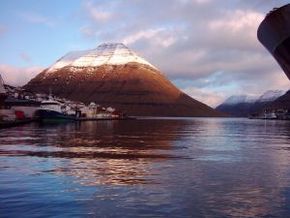Faroe Islands Travel Guide
The Faroes are a cluster of 18 islands just north of Scotland, in the middle of the wild Atlantic Ocean. Since they are relatively secluded, the Faroe Islands are a bit off the beaten path, which only makes them more attractive to visitors who like to stray off from the usual touristic route. Although the islands are Danish territory, the people have a language and culture of their own and they don’t have very much in common with their mainland cousins. You won’t find any neon-lighted metropolises on the Faroe Islands, but the rolling, windswept landscape is guaranteed to capture your interest. Tiny hamlets, scraggly mountains and ancient monuments will greet you upon arrival. These islands seem to be blocked in a different timeline in a different world, so make sure you have at least a couple of weeks to explore all their wonders. This Faroe Islands Travel Guide will help you learn more about this unusual place.
Faroe Islands Travel Guide - Geography and Places of Interest
The Faroes consist of 18 rugged islands about halfway between Norway and Iceland. Although if you take a glance at a map they can seem rather inaccessible, the Faroe Islands are only a short flight away from the UK. The landscape of the islands is similar, but not at all monotonous. With an impressive coastline spanning over 1000 kilometers, you will have your fair share of rocky beaches and jagged cliffs that offer some of the most amazing views on the planet.
The weather of the islands will please anyone who is wary of hot, murky weather. Summers are very mild, winters are rainy, and like in nearby Britain, cloudy skies and wispy fog are a daily occurrence. Before drivers get scared of what might await them on the roads in the Faroe Islands, you should know that travelling from one hamlet to another is greatly facilitated by the large number of tunnels built for the purpose. The capital of the islands, Torshavn, located on Southern Streymoy islands, is a small and quaint town, and there are countless villages and hamlets that you can visit.
Faroe Islands Travel Guide - People and Culture
The people of the Faroe Islands are fiercely independent. Although the main source of income of the islands is fishing, the country is mostly self-sufficient and has been so for centuries. Although the people are descended from 9th century Norwegian settlers, their culture and language has evolved in a unique way. Faroese language originates from Old Norse, and although written works are few, the Faroese oral tradition is exceptionally rich. If you happen to visit the Faroe Islands during a festival and holiday, you will have ample chance to discover the fascinating traditional music and dance of the nation, and don’t forget to sample the Faroese cuisine. This Faroe Islands Travel Guide recommends that you try out the “Grind og spik”, traditionally prepared pilot whale meat.
Things about Faroe Islands you may be interested in
Be the first who requests a site listing for this page.Recent Travel Guides from the Faroe Islands
This Torshavn travel guide will give you an insight into the beauties and functions of the capital of the Faroe Islands, a group of islands located somewhere between the Norwegian Sea and the North Atlantic Ocean. Today the Faroe Islands are considered a part of the Kingdom of Denmark, just like Greenland.... Read more »


